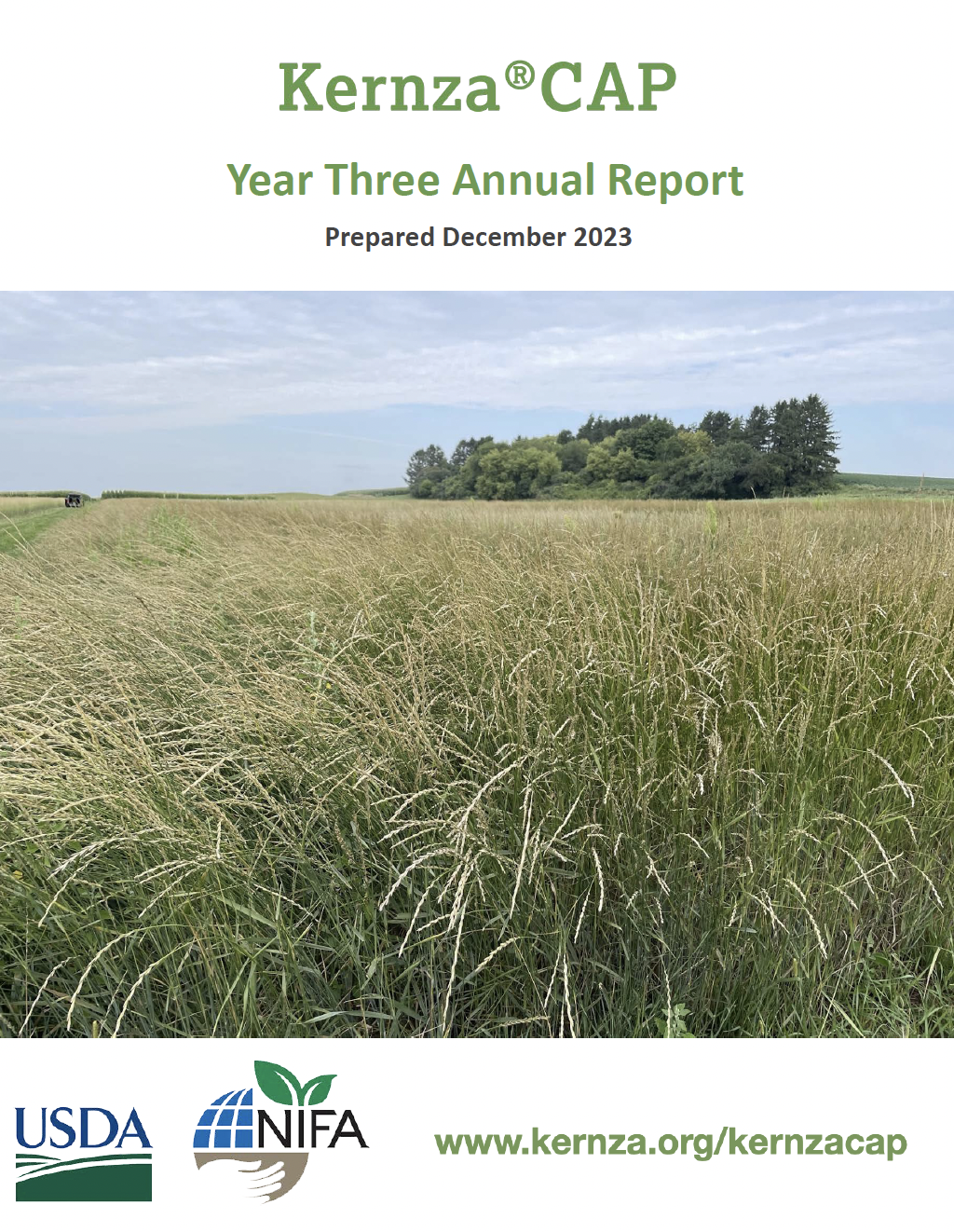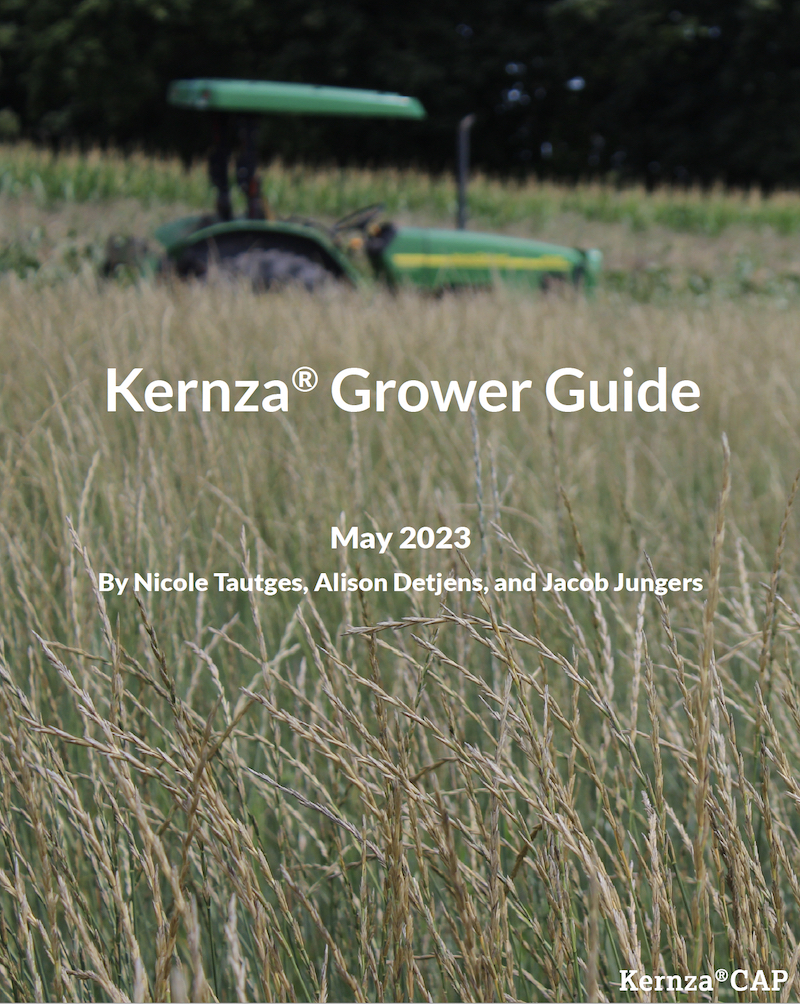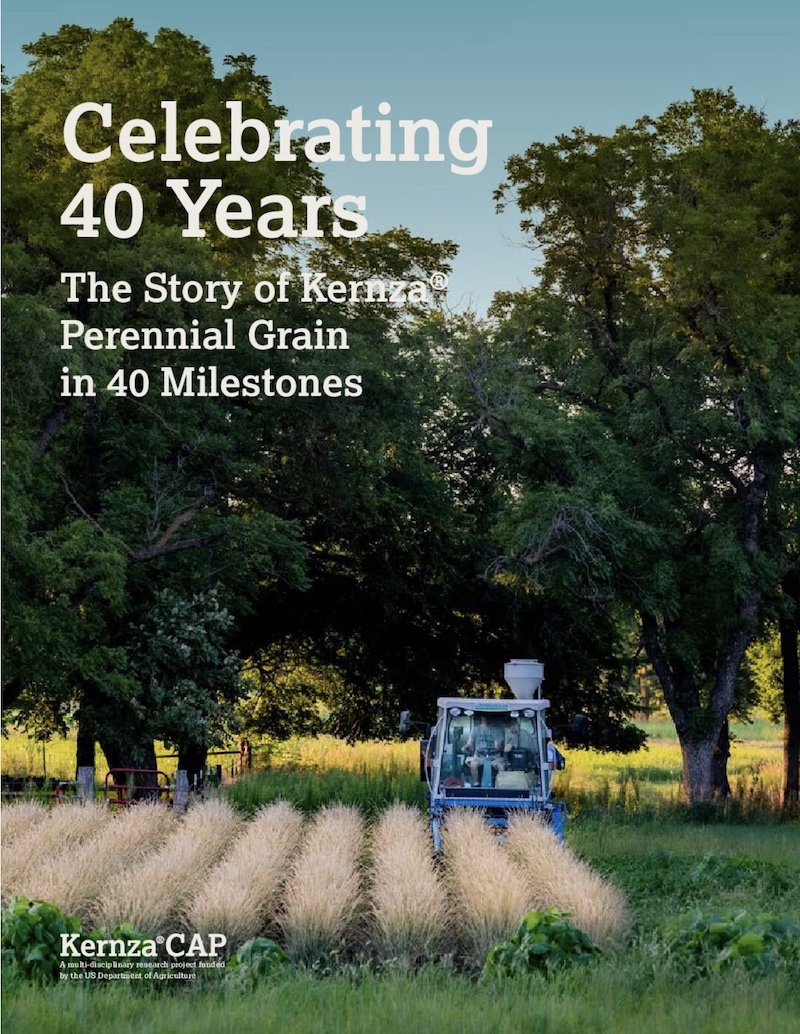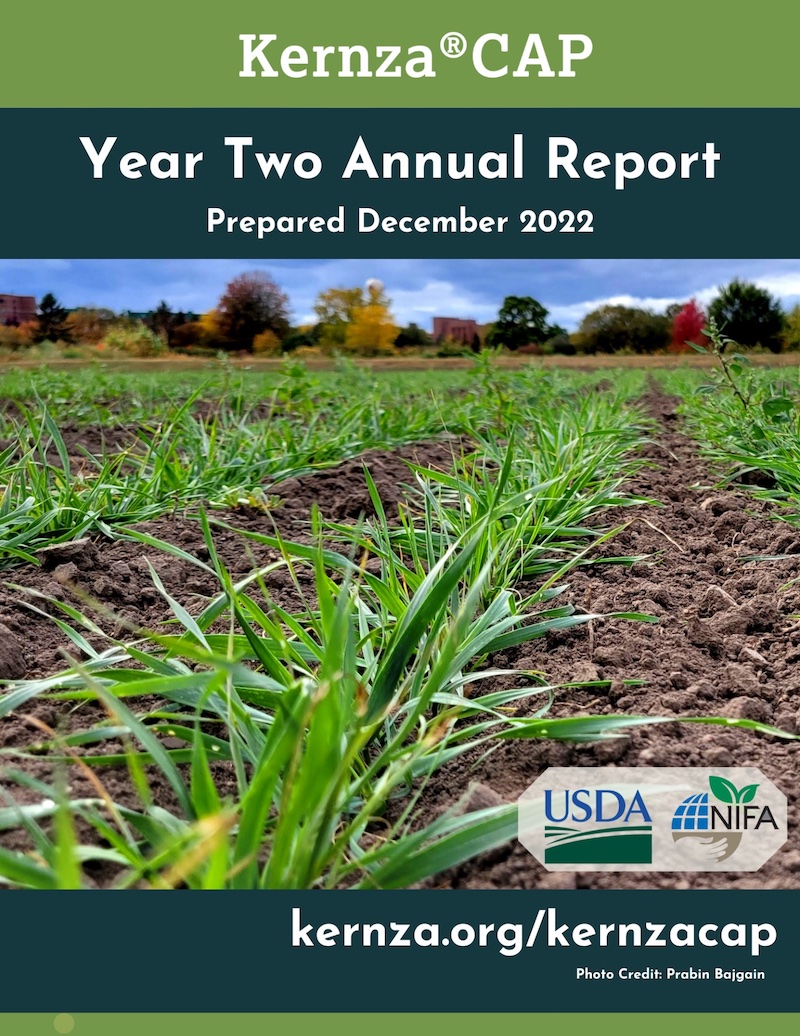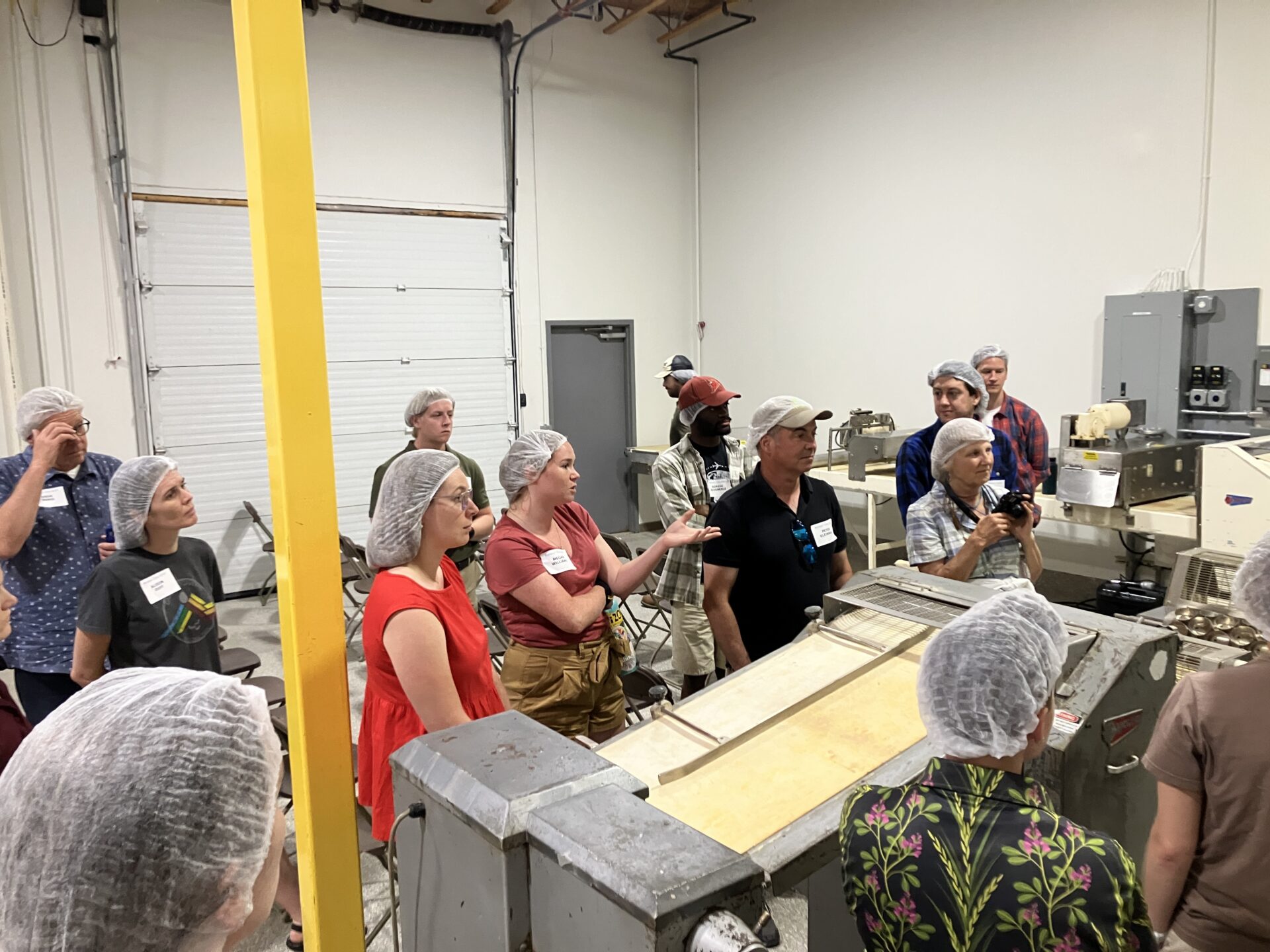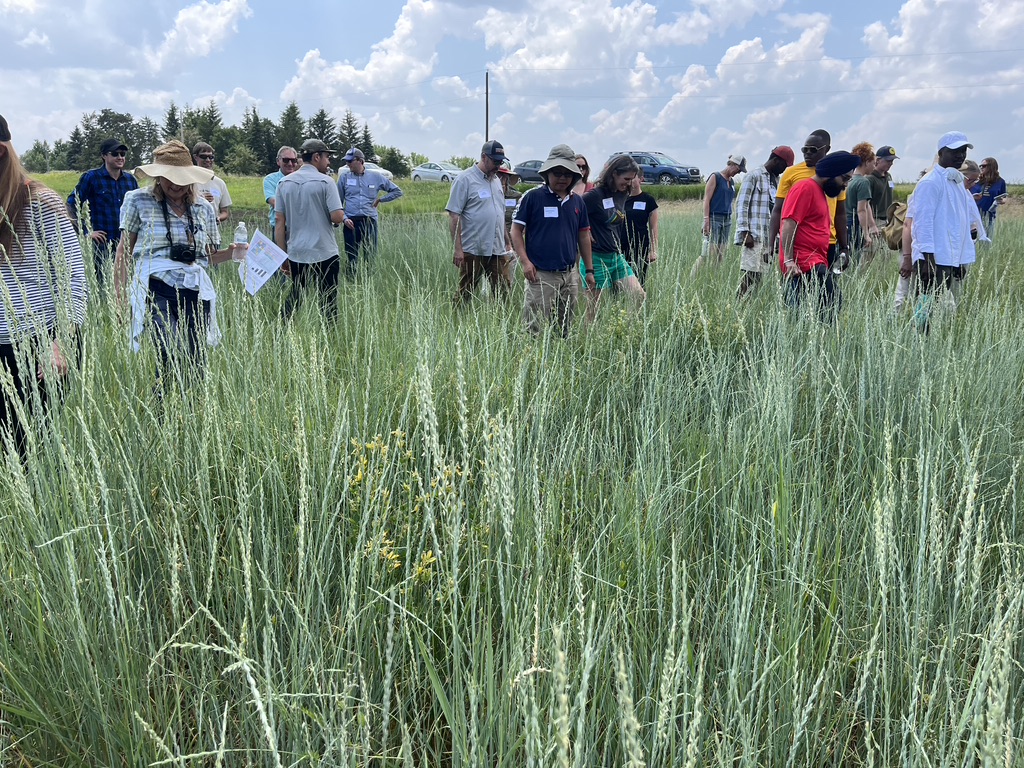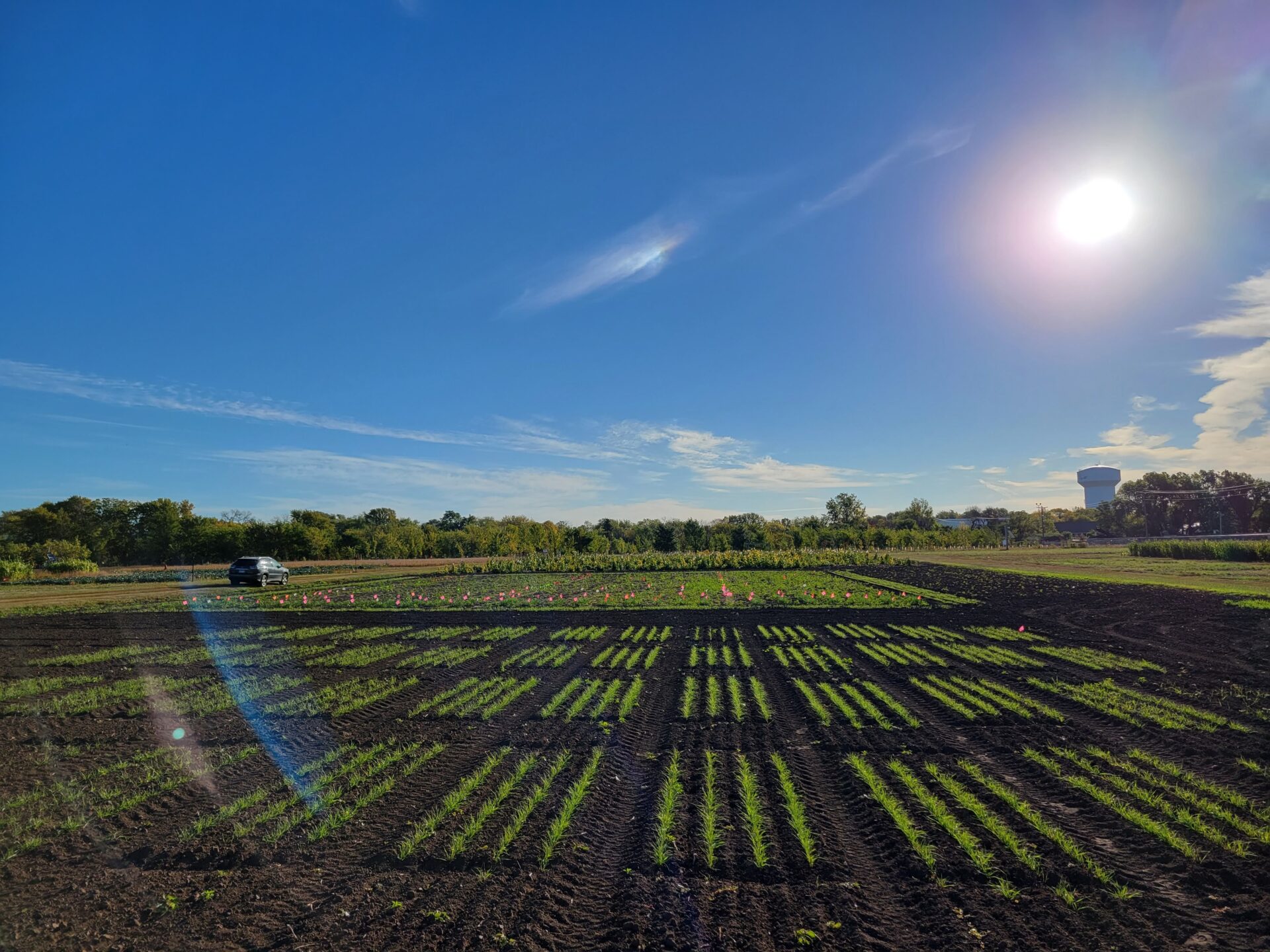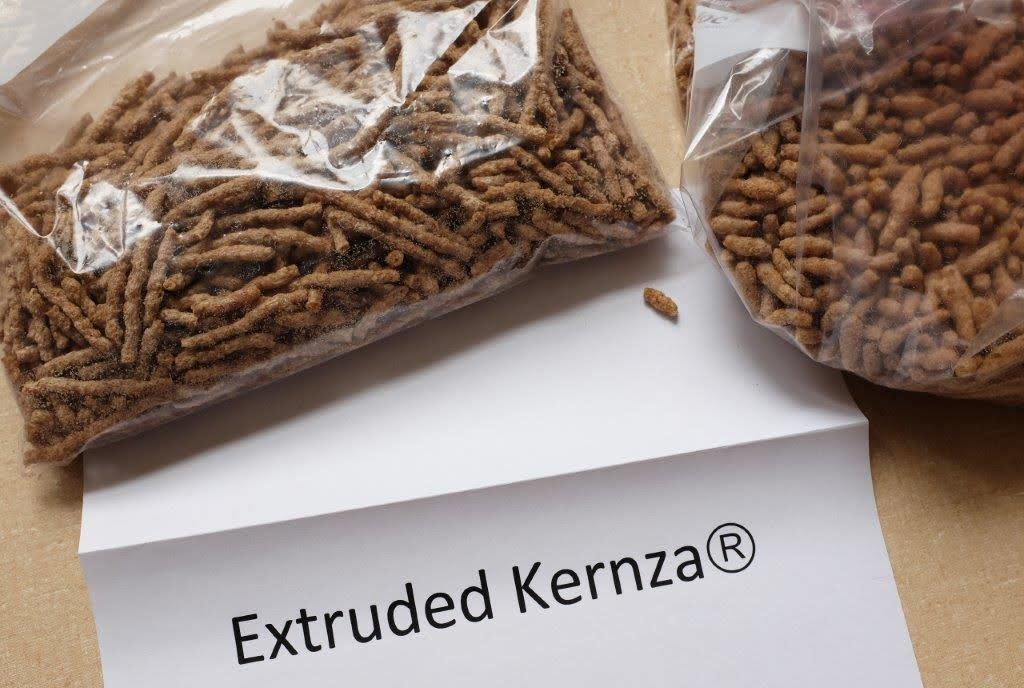This work is supported by AFRI Sustainable Agricultural Systems Coordinated Agricultural Program (SAS-CAP) grant no. 2020-68012-31934 from the USDA National Institute of Food and Agriculture.
- The USDA SAS CAP program funded a five year grant, “Developing and deploying a perennial grain crop enterprise to improve environmental quality and rural prosperity”
- Activities run from September 2020 through September 2025
- Farmers, researchers, and public and private sector partners working together
- Research, education, commercialization, and policy innovations to scale up Kernza®
- Advance the environmental sustainability of food production
- Demonstrate the viability of new perennial cropping systems as real economic opportunities for farmers and rural communities
View the latest Kernza®CAP outcomes
Kernza®CAP has a grand vision
Kernza®CAP has six objectives

1. Advance germplasm and trait evaluation
Team
Project Leads:
James Anderson, University of Minnesota
George Annor, University of Minnesota
Prabin Bajgain, University of Minnesota
Lee DeHaan, The Land Institute
Project Team:
Obed Aduama, University of Minnesota
Jared Crain, Kansas State University
Pam (Baraem) Ismail, University of Minnesota
Coleman Selfridge, University of Minnesota

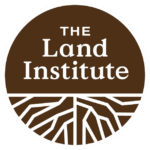

Goals
The goal of this team is to improve Kernza® genetics for increased grain yield, ecosystem services, and functionality as a new food ingredient.
- Improve IWG breeding populations and release varieties adapted to specific regions of the United States.
- Develop a low cost genotyping approach that leverages recently completed IWG genome sequencing to genotype larger breeding populations.
- Expand the database of genotyped plants and associated phenotypes to improve accuracy of genomic selection models and increase breeding efficiency.
- Evaluate breeding germplasm for nutritional quality and storage stability of IWG ingredients and food products.
- Explore the impact of breeding on root architecture and subsequent effects on ecosystem services.
Activities
- Assess agronomic traits including grain yield, seed size, plant height, resistance to shattering and free grain threshing, with identified superior trait performances used to develop future Kernza® varieties.
- Screen five variety candidates managed under different agronomic conditions for overall nutrient composition, including protein, fat, starch, dietary fiber, and antioxidants.
- Conduct storage stability tests on grain harvested from variety trials to understand optimal storage conditions and timing.
- Measure relationships between root traits and grain traits to explore potential genetic synergies or tradeoffs between ecosystem services and yield.
- In collaboration with the Agronomy objective group, replicate field and on-farm experiments at six or more locations, with a minimum core set of treatments including NPK fertility trials, deployed across the full geographic reach of the Kernza®CAP project.
Work will be closely integrated with the Environmental Quality objective group to identify future Kernza® varieties optimized for specific environmental outcomes. Work with the Agronomy objective group will determine how future Kernza® varieties respond to fertilization across a broad range of growing conditions. The team will update and optimize existing Kernza® genomic selection models by evaluating training and breeding populations and incorporating food science traits into the models to identify future varieties with grain that stores and performs well in various food products.
2. Enhance agronomic and on-farm knowledge
Team
Project Leads:
Valentin Picasso, University of Wisconsin – Madison
Nicole Tautges, Michael Fields Agricultural Institute
Project Team:
Andrea Basche, University of Nebraska – Lincoln
Steve Culman, Washington State University
Julie Dawson, University of Wisconsin – Madison
Leonardo Deiss, Ohio State University
Madeline DuBois, The Land Institute
Carmen Fernholz, A–Frame Farm
Jacob Jungers, University of Minnesota
Audrey Kalil, North Dakota State University
Priscila Pinto, University of Wisconsin – Madison
Dorothy & John Priske, Fountain Prairie Farm
Roberta Rebesquini, University of Nebraska – Lincoln
Ben Robinson, Ohio State University
Mercedes Santiago, The Land Institute
Dave Stoltenberg, University of Wisconsin – Madison
Laura van der Pol, The Land Institute
On Farm Partners:
Whilden Hughes, W. Hughes Farms
Dustin Johnsrud, Johnsrud Farms
Kurt Kimber, Kimber Farms
Luke Peterson, A-Frame Farm
![]()
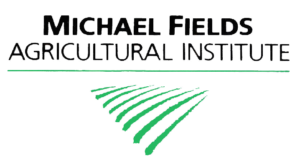
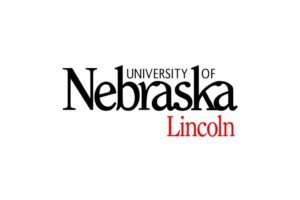
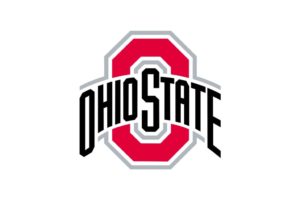
![]()
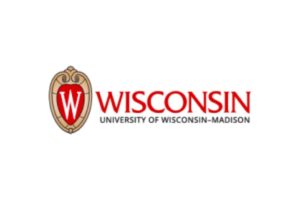
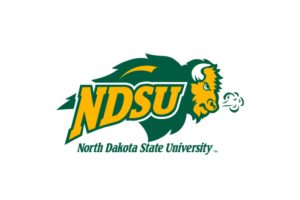
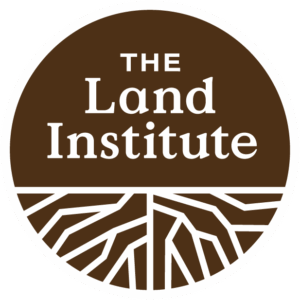
Goals
The goal of this team is to advance knowledge and understanding of Kernza® agronomy and on-farm knowledge.
- Evaluate variety candidates and their response to growing conditions and agronomic practices across the United States.
- Optimize nitrogen, phosphorus, and potassium management for Kernza® grain and forage production across US environments.
- Conduct participatory on-farm research to leverage grower experience and knowledge to inform research strategies and address regionally specific management practices to support the grower’s network.
Activities
- Launch two field trials to evaluate management practices that maximize productivity and persistence, guide future fertility recommendations, and update management practice recommendations for improved grain yields and grain quality.
- Field Trial #1 is a variety trial that will explore how genotypes managed in identified environments interact (commonly called a GxExM experiment, genotype by environment by management). Kernza® genetic lines from the breeding programs will be evaluated under two levels of fertilization to determine how varieties respond to differences in nutrient application.
- Field Trial #2 is a fertility trial that will examine N, P and K fertilizer rates and application timing. Additionally, the team will measure grain and forage yield in summer after harvest and at fall, and nutrient content of grain and forage to determine which fertilization strategy maximizes grain and forage yields.
- Conduct on-farm trials in collaboration with Kernza® growers to integrate grower experience and knowledge into research strategies and address regionally specific management practices to better address the different growing regions of the U.S.
- Trial sites will also host Extension and outreach activities described in the Education, Extension, and Policy objective group and will provide case-study examples for curricula modules and data for water quality model validation.
3. Improve environmental quality
Team
Project Leads:
Jessica Gutknecht, University of Minnesota
Alyssa Hartman, Artisan Grain Collaborative
Project Team:
Nathaniel Brunsell, University of Kansas
Tomás Cassani, The Land Institute
Tim Crews, The Land Institute
Soudeh Ghasemian, University of Kansas
Wonsook Ha, USGS Upper Midwest Water Science Center
Gurparteet Singh, University of Minnesota
Jared Trost, USGS Upper Midwest Water Science Center

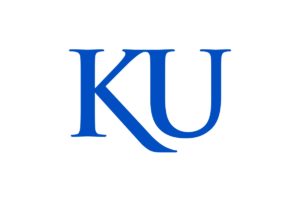
![]()
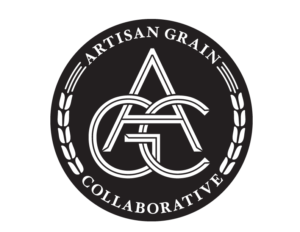

Goals
The goal of this team is to determine which Kernza® management strategies best improve environmental quality in comparison to “business as usual” annual cropping systems. Objectives include:
- Quantify the potential of Kernza to improve water quality through a combination of empirical measurements and modeling on plot and landscape scale measurements.
- Quantify the potential of Kernza to reduce greenhouse gas emissions by synthesizing field observations with biophysical, predictive models in relation to cropping practices and climate forcings.
- Quantify soil health changes under Kernza cropping systems, including soil physical characteristics, as potential drivers of other ecosystem services.
Activities
- In coordination with Agronomy and Breeding objective groups, instrument experimental plots to measure surface runoff, soil moisture, and nitrate levels in soil water beneath the rooting zone.
- Calibrate and validate crop-soil hydrology models to understand water quantity and quality characteristics of Kernza® at a watershed scale.
- Estimate the GHG footprint of Kernza® using biophysical models based on carbon flux data collected with eddy flux towers and static chambers.
- Validate crop and water quality models using data from all field trials, with a focus on grain yield, aboveground biomass, root biomass, and carbon dynamics.
- Conduct model simulations to assess climate change impacts (altered precipitation and temperature) on Kernza® GHG emissions and environmental quality.
Work will be closely integrated with the Agronomy team’s field and farm trials and the growers partnering on the grant. Research outcomes from this work will be incorporated into the Kernza® grower management guide, curriculum developed by the Extension, Education and Policy team, and shared with industry stakeholders, including the Kernza® Stewards Alliance.
4. Engage Education, Extension & Policy
Team
Project Leads:
Erin Meier, Green Lands Blue Waters (UMN)
Aubrey Streit Krug, The Land Institute
Project Team:
Cynthia Bartel, C Bartel Inc.
Michael Bell, University of Wisconsin – Madison
Whitney Clark, Friends of the Mississippi River
Maura Curry, Land Stewardship Project
Clair Keene, North Dakota State University
Jonathan Kilpatrick, Sustainable Farming Association
Peter LaFontaine, Friends of the Mississippi River
Diane Mayerfeld, University of Wisconsin – Madison
Steve Morse, Minnesota Environmental Partnership
Sienna Nesser, University of Minnesota
Lydia Nicholson, The Land Institute
Trevor Russell, Friends of the Mississippi River
Hannah Stoll, University of Minnesota
Claire Wineman, The Land Institute
Lucinda Winter, Sustainable Farming Association
![]()
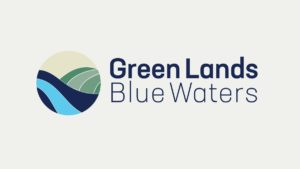



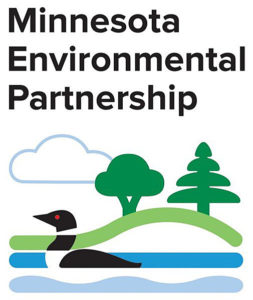

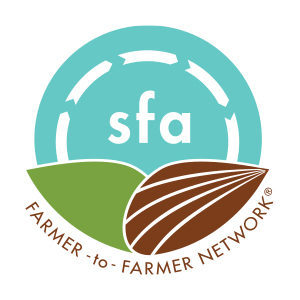
![]()
Goals
The goal of this team is to compile and share knowledge and experiences of Kernza® production to support future partners, inform research priorities, and promote policy for perennial grain production. Objectives include:
- Design and deploy educational curricula for a wide variety of learner audiences.
- Develop Extension capacity through the launch of a multi-institution, transdisciplinary leadership cohort.
- Develop a Grower-Researcher Network focused on current Kernza growers linked with established markets.
- Raise awareness and deepen the understanding about the transformative power of perennials with public decision makers.
- Construct a national framework for IWG adoption opportunities through state and federal conservation programs.
Activities
- Develop, deploy, and distribute curriculum for a range of learners – middle school through graduate level – using in-person and online platforms. Outcomes will include an experiential graduate capstone course integrating participation of researchers and key stakeholders.
- Launch an Extension leadership cohort with multi-institution, transdisciplinary membership. The cohort will delve into the concepts of perennial agriculture and build the foundation for formal Extension programming. An Extension outreach toolkit will be developed and beta tested by the first cohort.
- Cultivate a Grower-Researcher Network through coordinated educational sessions and field days. Document experiences and explore ways to effectively expand the network to other Kernza growers in future hot spots.
- Host key decision-maker educational sessions to engage legislators and advocates in the latest perennial crop developments and to explore innovative policy supports. Document methods and outcomes in Minnesota for future replication in states primed for Kernza production.
- Identify and inventory existing federal and state conservation programs that offer pathways to adoption to maximize program use and inform future policy opportunities.
Work will include the integration of perennial agriculture and Kernza® production into multiple educational, outreach, and support settings. The team will curate the most up-to-date science and implementation approaches into accessible informational and engagement tools for students, growers, educators, technical assistance providers, and policymakers.
5. Develop supply chains and economic drivers
Team
Project Leads:
Colin Cureton, Forever Green Initiative (UMN)
Tessa Peters, The Land Institute
Project Team:
Christopher Abbott, Perennial Pantry
Alicia Baddorf, University of California – Davis
Christie Biddle, Patagonia Provisions
Gwenael Engelskirchen, University of California – Davis
Tannie Eshenaur, MN Dept. of Health
Hana Fancher, The Land Institute
Alex Heilman, Perennial Promise Growers Cooperative
Nicholas Jordan, University of Minnesota
Andrew Leach, University of Minnesota
Peter Miller, Sustain-a-Grain
Ben Penner, Penner Farms
Tracy Singleton, Birchwood Cafe
Chris Wiegert, Healthy Food Ingredients
![]()

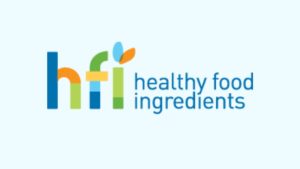
![]()
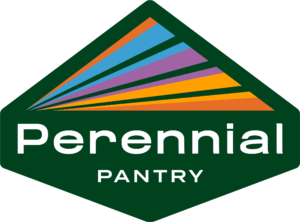
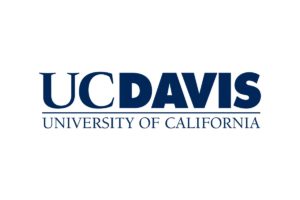

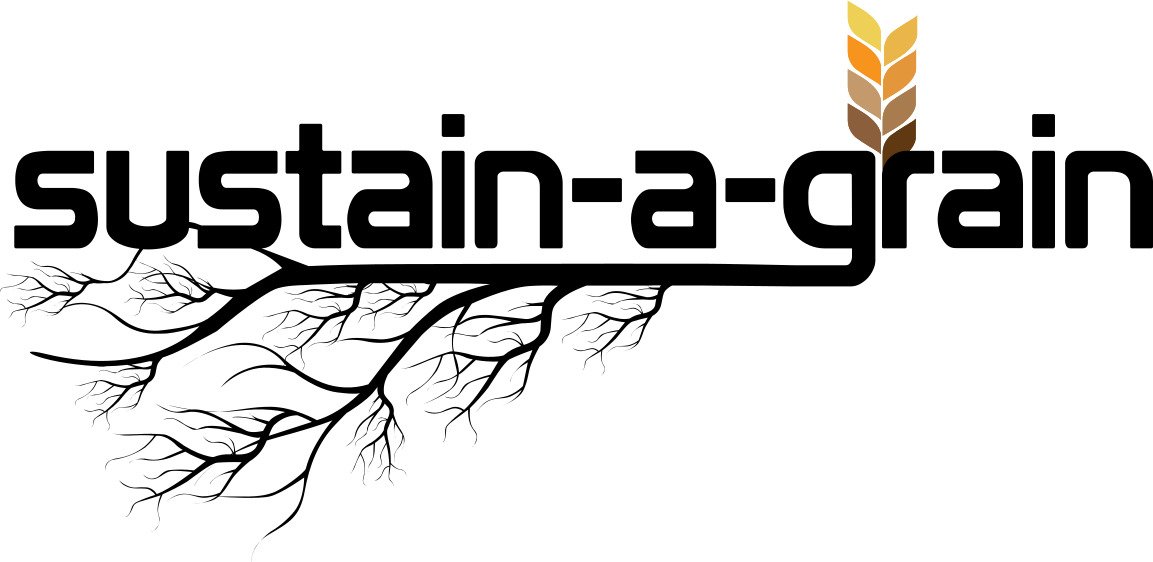
Goals
The goal of this team is to advance the commercialization of Kernza® through a collaborative informative feedback loop between industry, research, and production. Objectives include:
- Develop a Kernza® Stewards Alliance to be the voice for Kernza industry partners in a broader Kernza Consortium.
- Perform foundational consumer research and market analysis to determine Kernza’s profitability for producers, supply chain actors, and end users.
- Research, develop, and solidify Kernza supply chains and markets.
- Evaluate models for valuing and promoting the diverse environmental, social, and health benefits of Kernza.
Activities
- Facilitate the development of a Kernza® Stewards Alliance as a platform to:
- Establish and maintain shared values among Kernza® market stakeholders including growers, supply chain partners, end-users, and consumers.
- Govern and steward Kernza® germplasm, production, standards, and supply.
- Serve as a unified voice for Kernza® in the marketplace.
- Advance consumer research and market analysis.
- Develop a shared marketing and communications strategy.
- Identify Kernza® industry partners’ target consumer segments and value drivers.
- Identify supply chain bottlenecks and develop expansion plans.
- Conduct a literature review of payments and marketplaces for ecosystem services programs to improve water quality, carbon sequestration, etc. that will be shared with the Education, Extension, and Policy team to inform education materials development.
- Collaborate on policy and program recommendations for valuing ecosystems services benefits.
- Build a replicable model for rapid sustainable commercialization of other continuous living cover crops.
Work will be accomplished through several strategic activities, including launching an industry advisory group that will govern and steward Kernza® germplasm, production, quality standards, and supply as it continues to emerge in the marketplace. Work will be informed by the research results from the Breeding, Environmental Quality and Agronomy teams and will provide a platform for researchers, growers, and industry stakeholders to respond to and accelerate the commercial adoption of Kernza®.
6. Activate transformational change through intentional integration
Team
Project Team:
Jacob Jungers, University of Minnesota
Tessa Peters, The Land Institute
Evelyn Reilly, University of Minnesota
Aaron Reser, Green Lands Blue Waters (UMN)
Tara Ritter, University of Minnesota
Aubrey Streit Krug, The Land Institute
Evaluation Team:
Greta Landis, University of Wisconsin-Madison
Samuel Pratsch, University of Wisconsin-Madison
Amber Saylor Mase, University of Wisconsin-Madison




Goals
The goal of the integration objective group is to provide an efficient platform for communication and knowledge sharing within and outside of the formal project network. The team will develop and support a structure of feedback loops so that the 5 objective groups above can adaptively respond to new knowledge and information acquired from one another. As a transdisciplinary, multi-stakeholder project, we believe intentional integration and collaboration can result in the greatest possible impact on the entire Kernza® enterprise, from research to market development and consumer engagement.
- Prioritize feedback loops and intentional integration.
- Build collective leadership.
- Lead the way for the next generation of perennial cropping systems.
- Catalyze new network reach and effectiveness through accessible data and shared learnings.
- Evaluate for impact, systems change, and emergent learning.
- Embed race and equity as explicit focus areas throughout each of the objectives.
Activities
- Design the project to encourage engagement across objective teams and with the broader Kernza network. Outputs will serve as inputs across objective groups. Examples include results from field trials informing breeding activities; optimizing agronomics for improved environmental quality impacts and market profitability; newest agronomic and environmental information included in education and extension materials and highlighted at field days; and trait and food science evaluations recommending new product developments.
- Explore the formation of a collaborative leadership structure for Kernza. Create and actualize a leadership body to develop collective priorities towards the pursuit of scaling Kernza smarter, faster, and more strategically.
- In order to create a pathway for the next generation of perennial cropping systems, we will capture and synthesize learnings from this project at the leading edge of a new perennial agricultural paradigm. We will develop a model and documented best practice recommendations for roll-out of future perennial crops.
- Make project data and shared learnings broadly accessible, with goals of catalyzing new network reach and improved partner effectiveness, as well as cultivating a shared spirit of transparency.
- Create a 5-year evaluation plan to capture impact evaluation metrics (including a Social Network Analysis). Create an evaluation report to inform and advise the development of future perennial crops and future trans-disciplinary research projects.
- Launch a race and equity subgroup to meet regularly and intentionally weave race and equity as an explicit focus area throughout each of the objectives and across the project.
